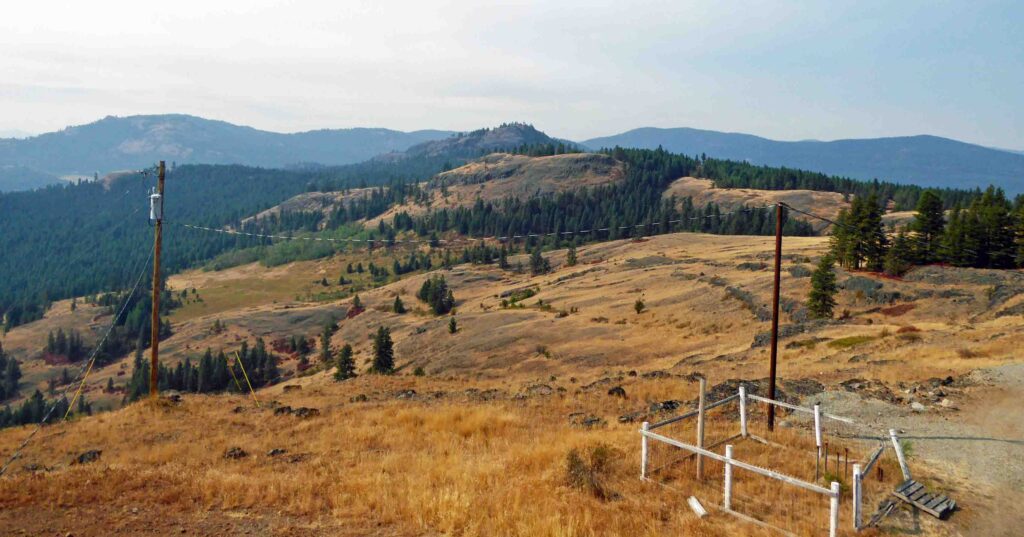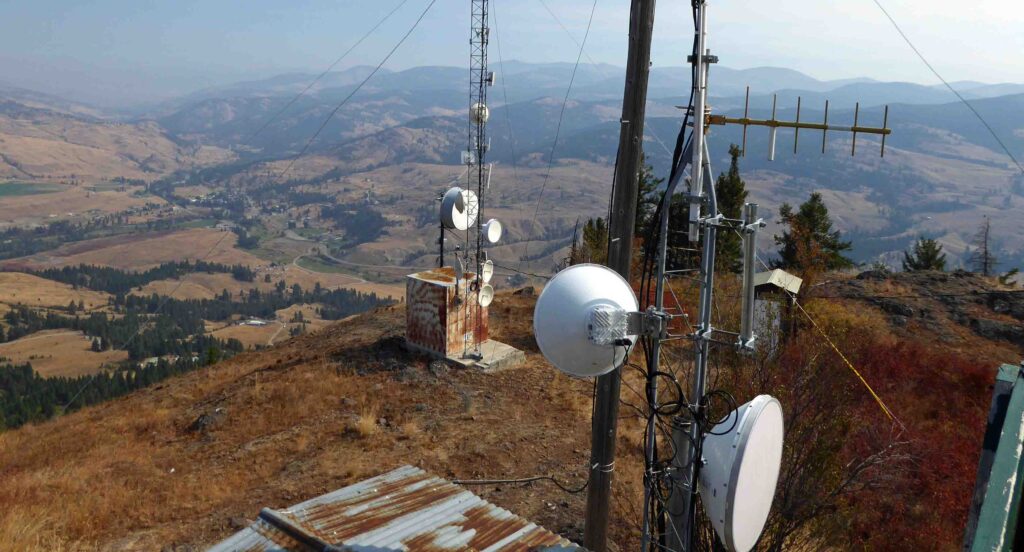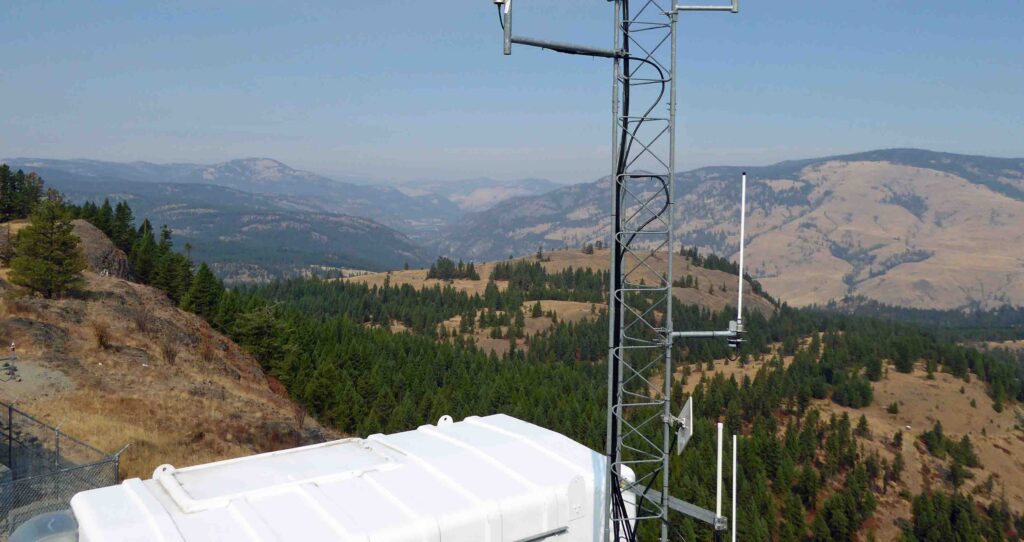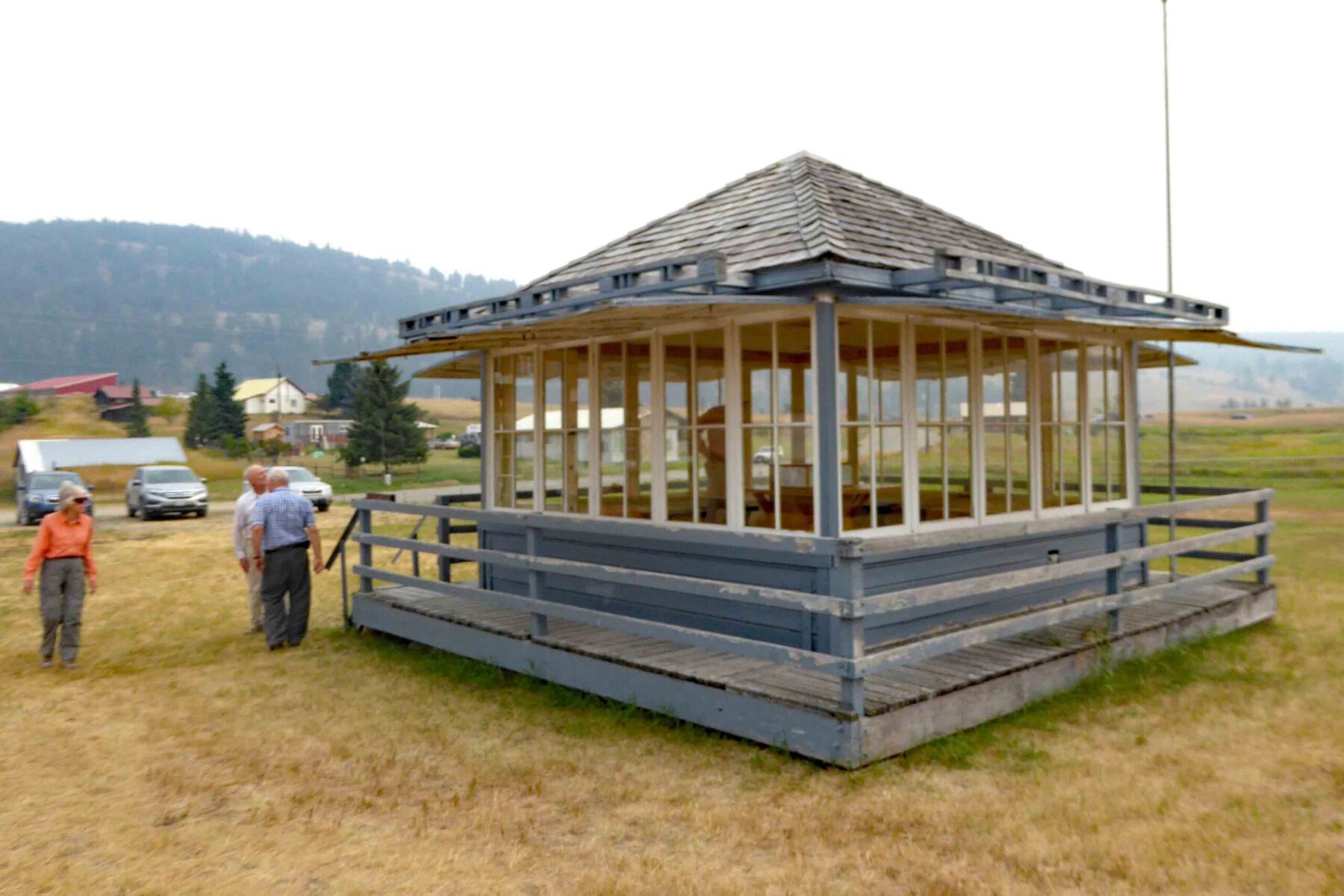Lookout Site Regions: Origin Site ~ Northeast, Re-Lo Site ~ Northeast
The move of the 2nd Franson Peak Lookout’s L-4 cab from near Republic to the Schoolhouse Museum in the ghost town of Molson is a good example of a Type 1 re-location. The Franson Peak description in Rex’s Forest Fire Lookout Page includes: “Developed in 1934 with an L-5 cab, a 15′ treated timber tower with L-4 cab replaced it in the 1950’s. The present 15′ tower with DNR live-in cab, built in 1986, was last staffed by the DNR in 1995……..The L-4 cab from the previous tower was moved to the Molson Museum.”
We visited both the Origin Site atop Franson Peak and the Re-Lo Location in the ghost town of Molson in September, 2017. The 1986 DNR Live-in tower was still there on Franson Peak and is on the SLOW93 list. The re-located L-4 cab was seen on the Schoolhouse Museum grounds in New Molson.
Franson Peak LO Cab moved to Molson Schoolhouse Museum
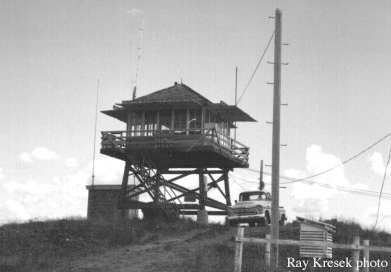

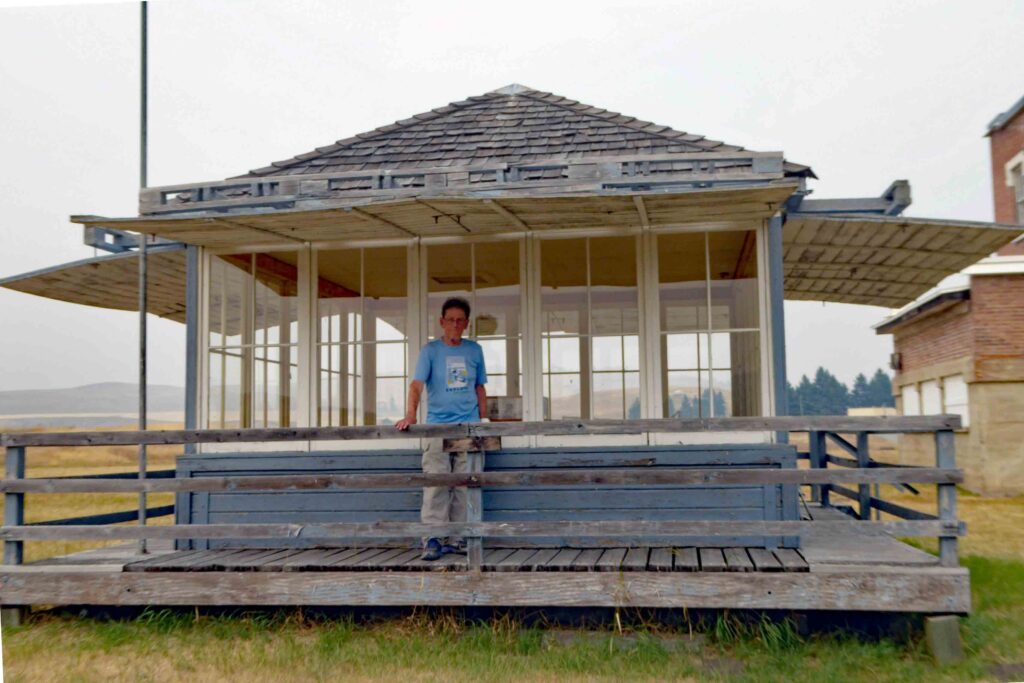
Our visit to Franson Peak LO’s RE-LO SITE at Molson Museum ~ 9/7/2017
Peggy and I visited the twin ghost towns of Old and New Molson and their two museums on a Hard Core outing.
Molson is less than 2 miles south of the Canadian border. Gold was discovered here in 1896 and about 300 miners rushed here during the next two years. When they found that the gold deposits were lacking, most rushed on to other gold fields. The town of Molson was founded in 1900 by promoter George B. Meacham, and investor John W. Molson, a member of the Molson Beer brewing family. The area was opened up to homesteading and the town became a trading center for residents on both sides of the border.
A local farmer named McDonald realized that Meacham had never filed claim on the land that the town of Molson occupied, he filed his claim and told the town people to get off of his land. Most of the residents left “Old Molson” and formed “New Molson” ½ mile away. The two towns fought over the name, the post office and the bank for years.

When the last mine closed up in 1935 and the railroad quit coming to Molson, most of the occupants left. A few remained in New Molson until the post office and the school closed in the 1960s. Now both sites form a ghost town with only the surrounding farms remaining. (The 2000 census listed 35 inhabitants for Molson.)
The Old Molson Ghost Town Museum, an outdoor collection of old farm equipment and pioneer buildings, was established at the original townsite in 1960.


The Molson school closed in 1969 and was re-opened as a museum in 1982. It features indoor displays of hand tools, pioneer house and school artifacts and photographs.
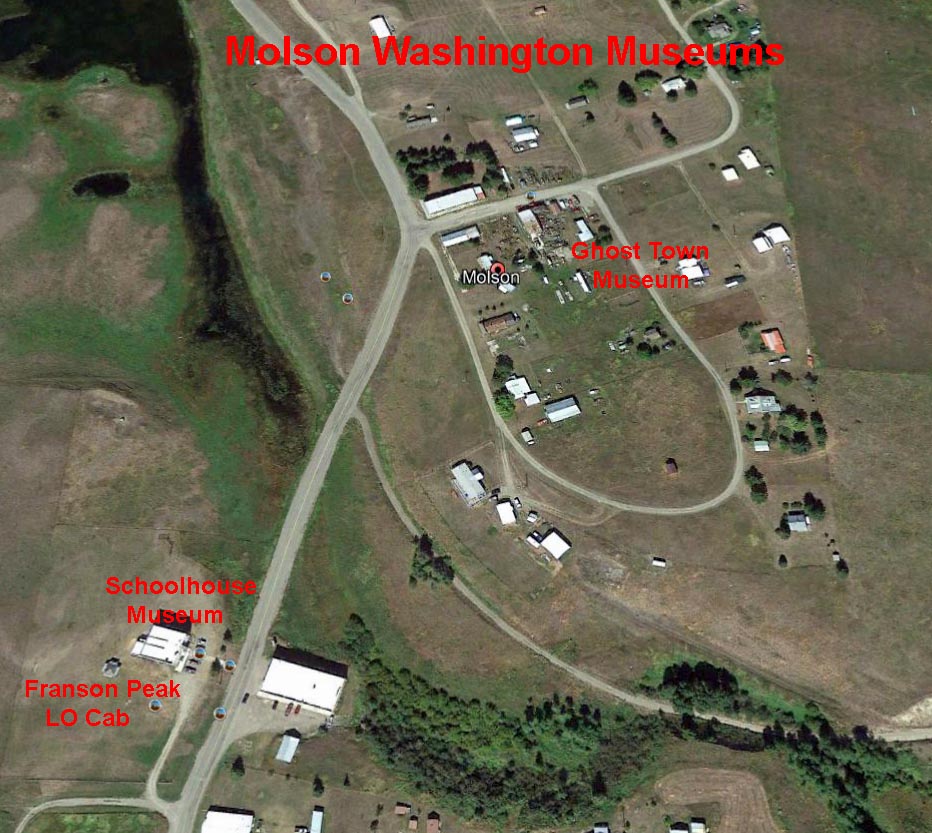
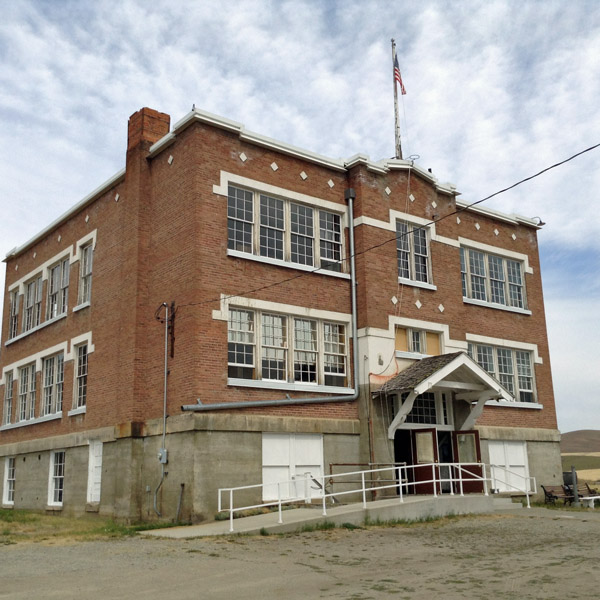

The 15’ tower that the cab sat on was not moved to Molson. The cab now sits on the ground outside the museum there. The only lookout equipment or furnishings inside the cab is a firefinder stand, but no firefinder. A few photos of other fire lookouts are also displayed. The museum was not open when we visited, but the staff evidently do not know much about their lookout’s history. Tammy McLeod tells of her visit to the Molson Museum in her web site tammyslookouts.com. Tammy writes that “The lady inside the museum gave me an odd look when I asked about the lookout and called it “our gazebo.”
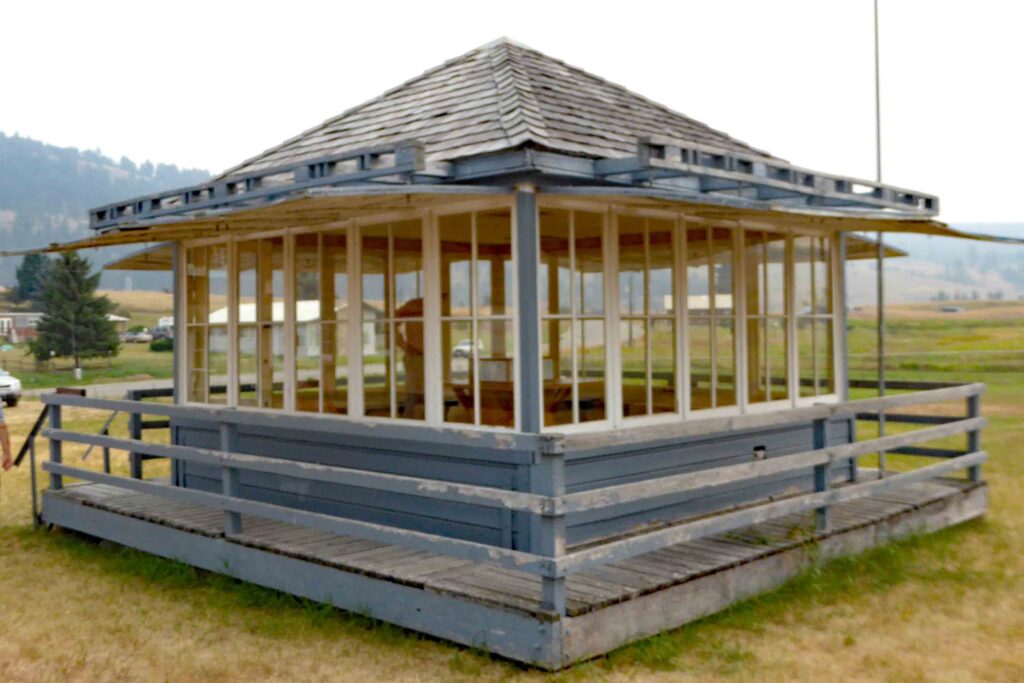
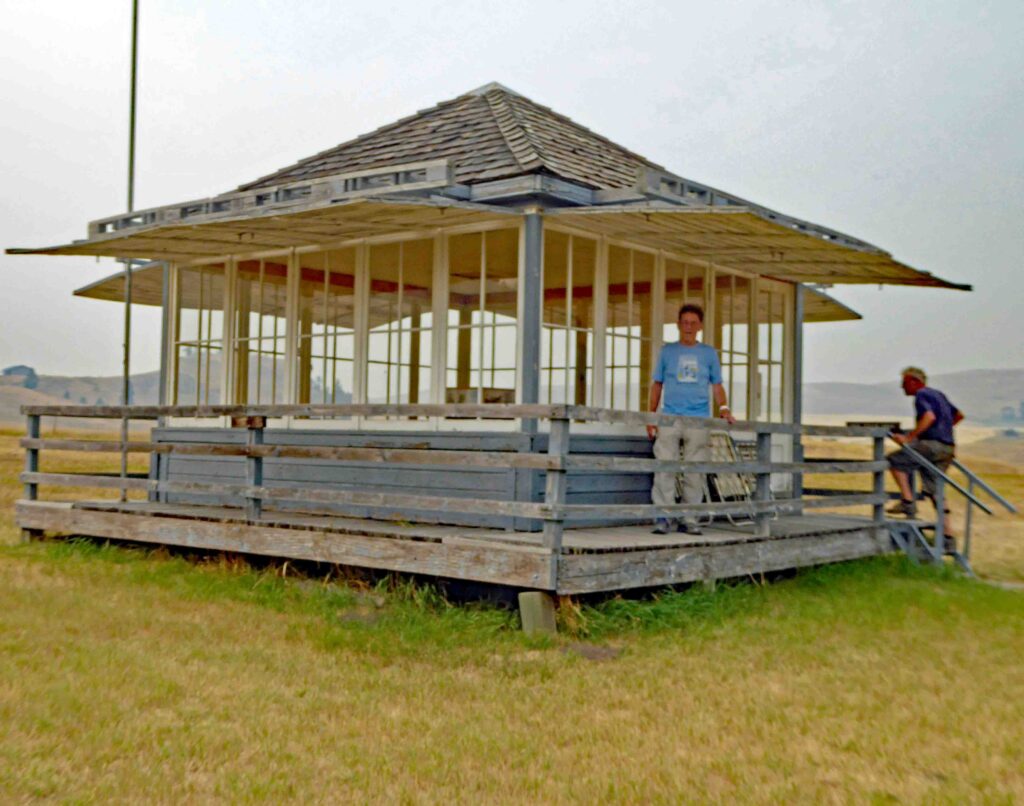
Our visit to the Franson Peak LO’s ORIGIN SITE atop Franson Peak ~ 9/2/2017
The 15’ DNR Live-in cab lookout that replaced the one which had been moved to Molson was still standing atop Franson Peak when we visited. It is on the SLOW93 list.

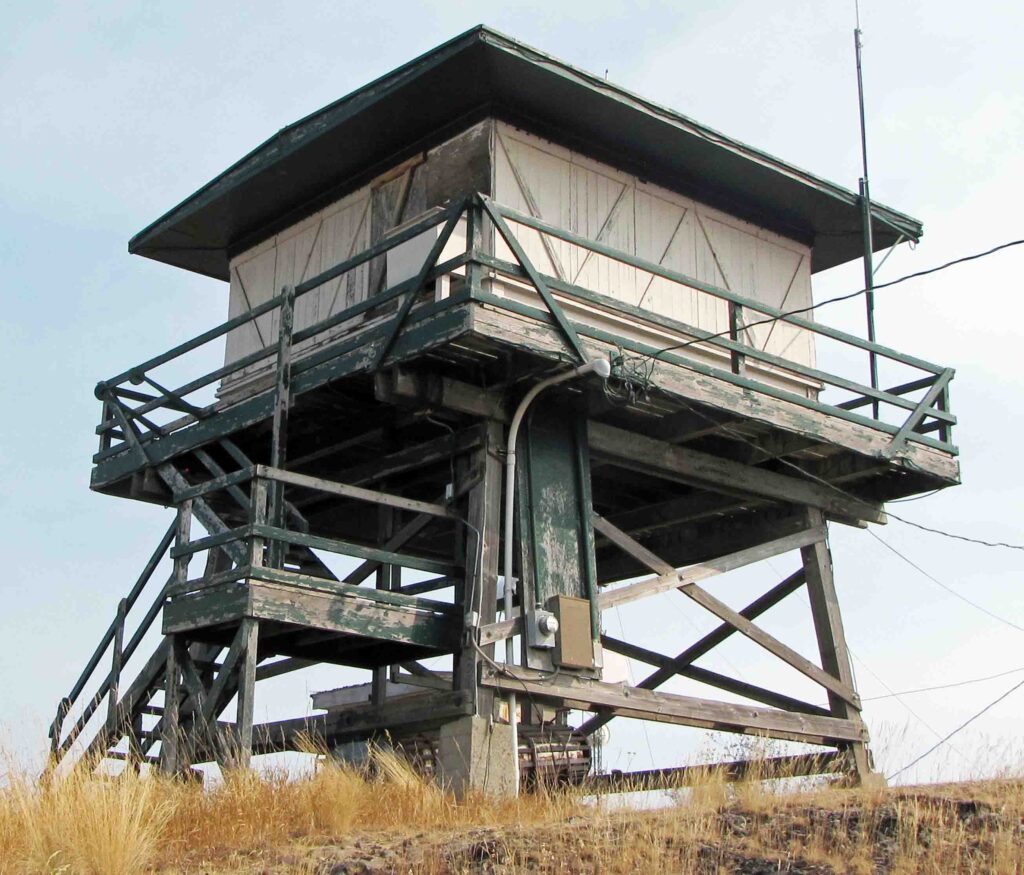

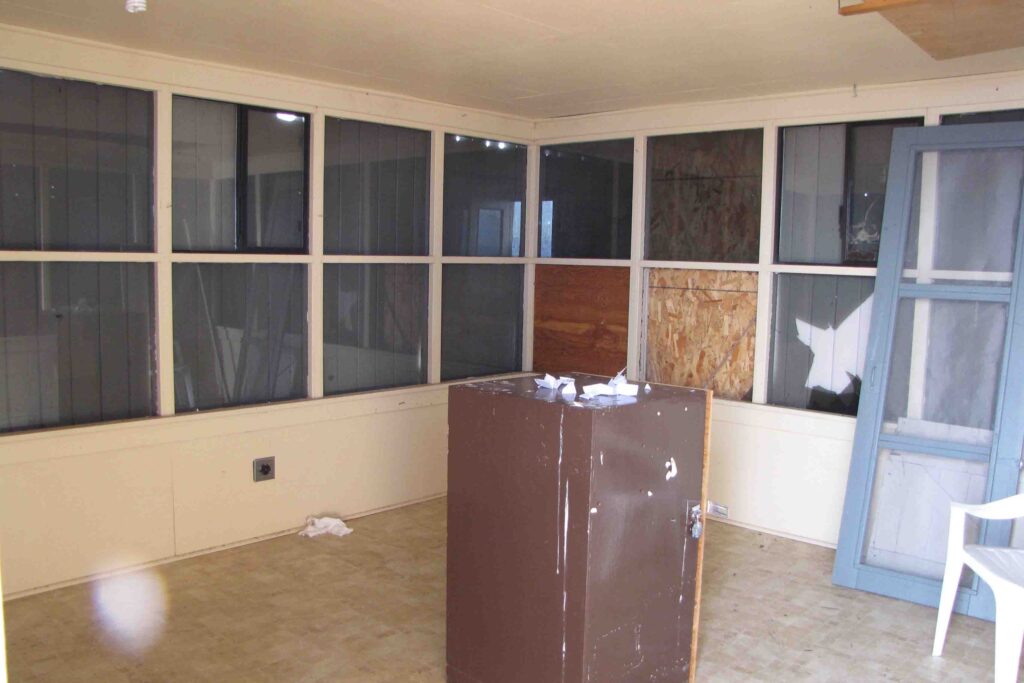
The view from the lookout included the typical eastern Washington mix of dry grasslands and forested hills and deep valleys.
